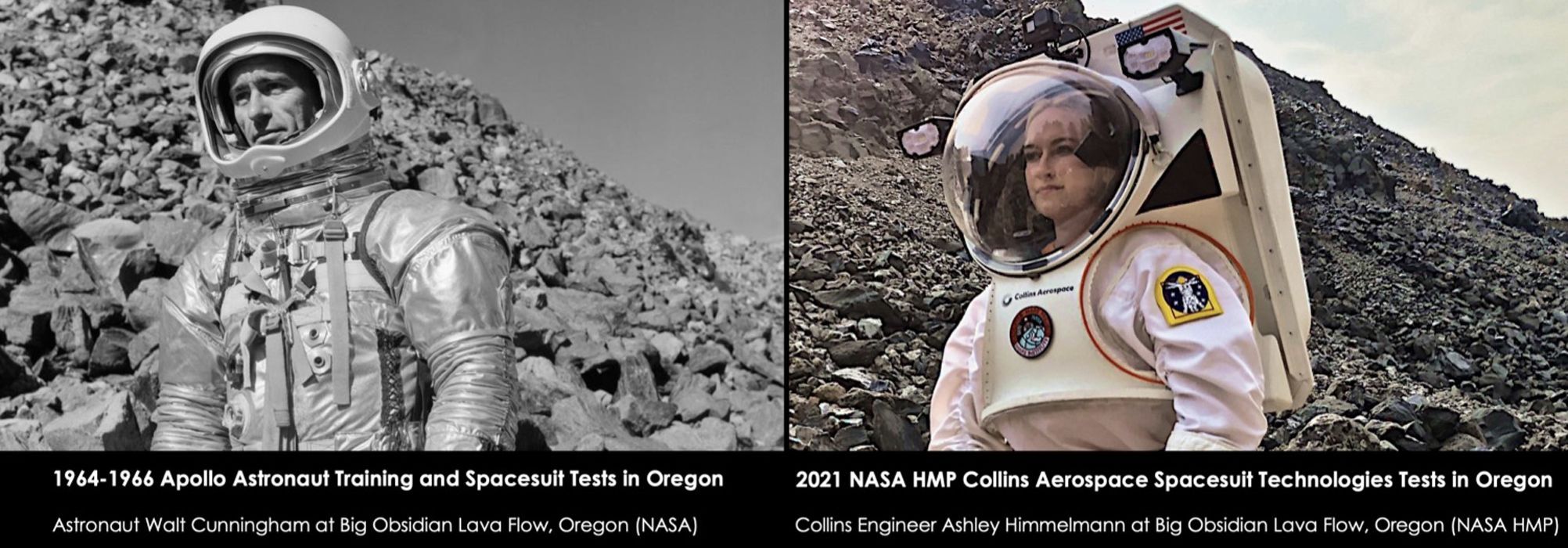
In anticipation of upcoming manned missions to both the Moon and Mars, new spacesuit technologies are being tested, including in the same places that the Apollo astronauts trained.
"It was exciting to be in Oregon to revisit some of the very locations where, in 1964 and 1966, the Apollo astronauts received field training in geology and tested spacesuits," said Dr. Pascal Lee, a planetary scientist with the SETI Institute and the Mars Institute, and director of the NASA Haughton-Mars Project at NASA Ames Research Center. "We have also identified new candidate sites for Moon and Mars exploration preparation, now that we know more, compared to the mid-60s, about the Moon and Mars."
- Oregon Public Broadcasting (OPB): NASA returns to Oregon for spacesuit testing before planned trip to moon
- PhysOrg.com: New spacesuit technology for moon and Mars exploration tested where Apollo astronauts once trained and tested spacesuits
- The Bulletin: NASA returns to Central Oregon for spacesuit testing
- The Oregonian: NASA tests new spacesuit technology in central Oregon
- SETI.org: New Spacesuit Technologies for Moon and Mars Exploration Tested in Oregon Where Apollo Astronauts Once Trained and Tested Spacesuits
 “Dog-bone” Asteroid Observations Fetch New Origin Theories
“Dog-bone” Asteroid Observations Fetch New Origin TheoriesNew observations of asteroid Kleopatra and the dynamics of its two moons, AlexHelios and CleoSelene, suggest that the asteroid is probably made up of metallic rubble and that it is lighter in weight than previously estimated.
“Asteroids are not inert bodies but complex mini-geological worlds,” said Franck Marchis, a senior planetary astronomer at the SETI Institute in California and the lead author of a new study of Kleopatra published this month in the journal Astronomy and Astrophysics. “Kleopatra and other weird asteroids are natural laboratories to challenge our knowledge of the solar system and make us think outside the box.”
- 7News Australia: New photos of asteroid Kleopatra reveal that it is shaped like a dog bone
- Archyde: Asteroid Cleopatra: New pictures reveal amazing things
- CNET: Bizarre ‘dog bone’ asteroid is bigger than New Jersey and has two moons
- CNN: ‘Dog bone’ asteroid spied by astronomers in new photos
- Digital Trends: There’s a weird asteroid shaped like a bone whipping around our sun
- EarthSky: Dog-Bone Asteroid Kleopatra Makes a Fetching Portrait
- Forbes Alert: New photos of ‘dog-bone’ asteroid reveal that it’s truly weird
- IFL Science: “Dog Bone” Asteroid’s Best Images Yet Confirm Its Very Weird Shape
- Inverse: Look: A Peanut Shaped Asteroid Captured in Marvelous Detail
- MSN.com/NBC News: The asteroid ‘Kleopatra’ is challenging what we know about the solar system
- Science Times: Bizarre Dog Bone Shaped Asteroid Spied on Best Images Yet Via the Very Large Telescope
- Tech Times: ESO Captures Kleopatra Asteroid’s Most Detailed Images – Very Large Telescope Reveals It Has Dog Bone Shape
- ZME Science: Astronomers take best pictures of Kleopatra’s ‘portrait’
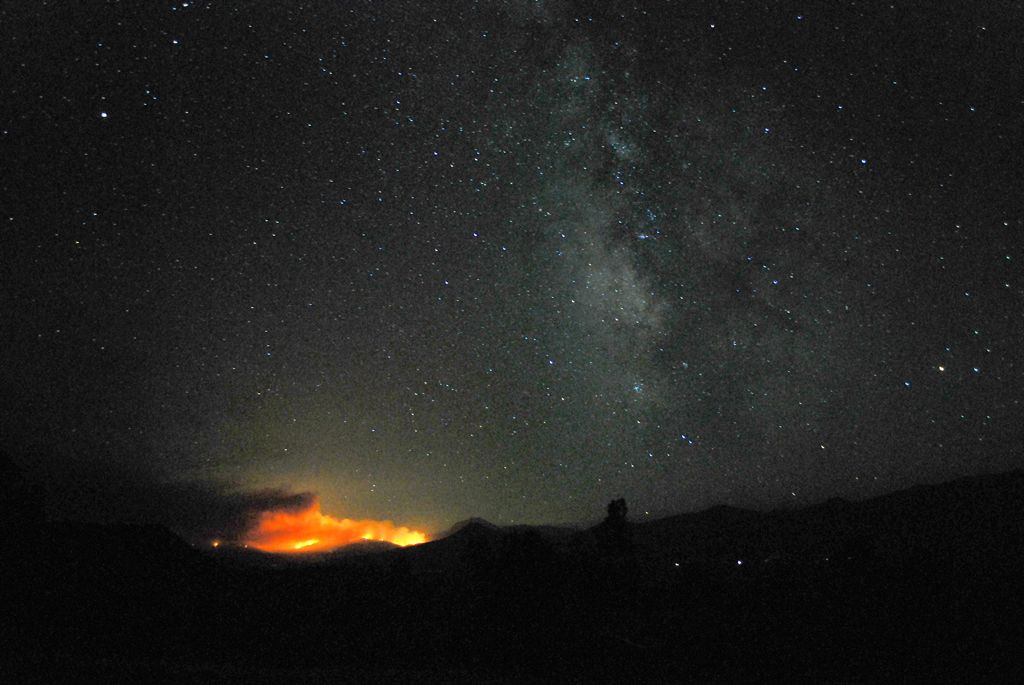 Wildfire Threatens SETI Institute’s Allen Telescope Array
Wildfire Threatens SETI Institute’s Allen Telescope ArrayFor the second time in seven years, the Allen Telescope Array, the first purpose-built telescope for searching for alien civilizations, is in danger from wildfires. The Dixie fire ranks as the second-largest fire in California’s history, and at the time of these articles, had burned an area as large as the state of Rhode Island.
Wael Farah, a research scientist with SETI, said Thursday night that the site is under an evacuation warning, but all staff except for him have left.
"I am still here on site, but might either leave tonight or tomorrow morning," Farah wrote in an email. "The flames are roughly 5-10 miles away. I can see them from here, but they are still on the other side of the rim. Things might change depending on the wind conditions; I'm hoping for the best."
- EarthSky: Wildfire Threatens A SETI Telescope in California
- Forbes Alert: ‘Internet Apocalypse’? Sure but Inspiration4 is also go for launch in this week’s science news
- Inverse: Why California Wildfires Threaten the Search for Alien Life
- KPIX 5/CBS: Dixie Fire Threatens SETI Antenna Array Used to Search for Extraterrestrial Life
- KRCR 7/ABC: Extraterrestrial telescope threatened by the Dixie Fire as it burns into Shasta County
- PhysOrg.com: Antennas searching for extraterrestrials threatened by wildfire
- SETI.org: Antennas Searching for ET Threatened by Wildfire
- San Francisco Chronicle/SFGate: California’s Dixie Fire roars back to life, threatens new communities
- SlashGear: California wildfires threaten SETI radio telescope array
- Techradar: Million-acre California wildfire threatens Allen Telescope Array’s search for alien life
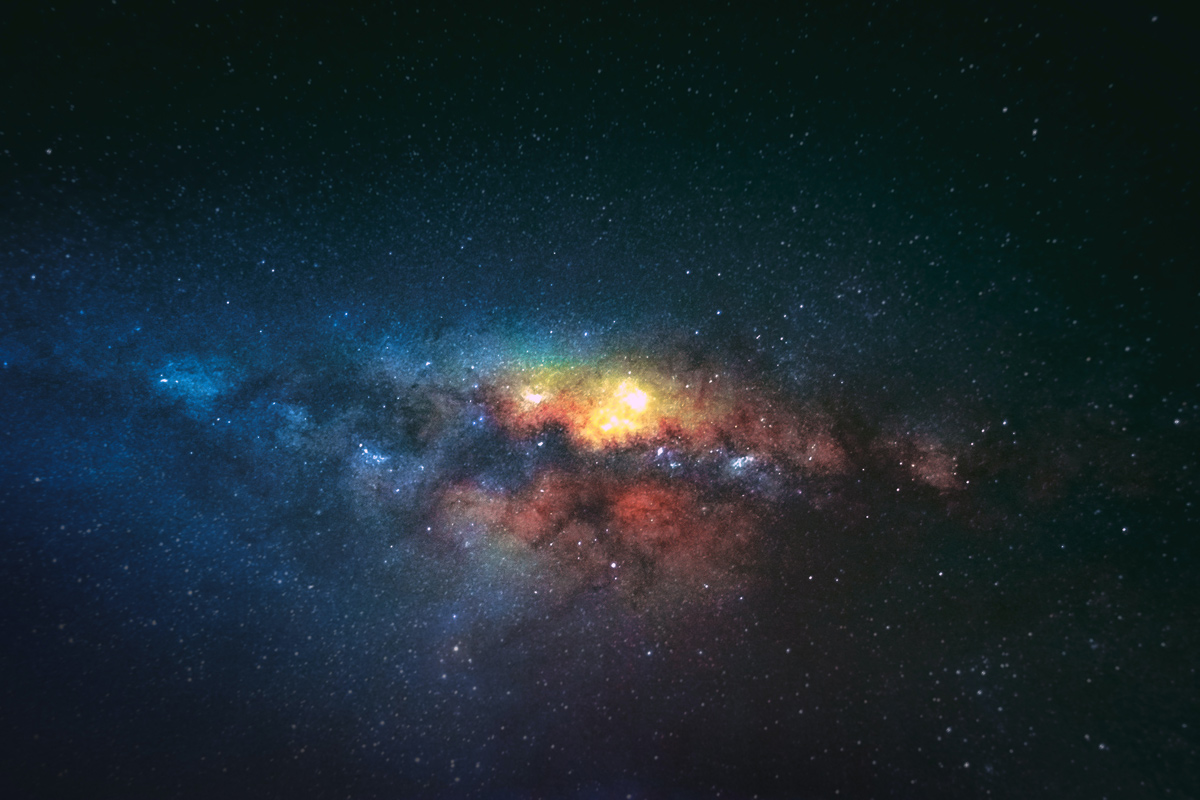 Mysterious Radio Signals from Galactic Center Likened to Wow! Signal
Mysterious Radio Signals from Galactic Center Likened to Wow! SignalA recent strange radio burst has scientists puzzled – and reflecting on the famously elusive Wow! Signal from 1977. For the newly discovered signal, alien transmission is doubtful, with possible explanations including a pulsar or magnetar. However, the source, whatever it was, didn’t emit any other type of signal.
Despite follow-up attempts to find the signal again, researchers haven't been able to spot the Wow! Signal recurring.
"Was that E.T. or was it not E.T.? Nobody knows," Seth Shostak, senior astronomer at the SETI Institute, told Astronomy magazine in 2020.
Wang told Newsweek the Wow! signal is still a mystery, but that "it is likely that it is either astrophysical, or a human-made artefact detected by the telescope accidentally."
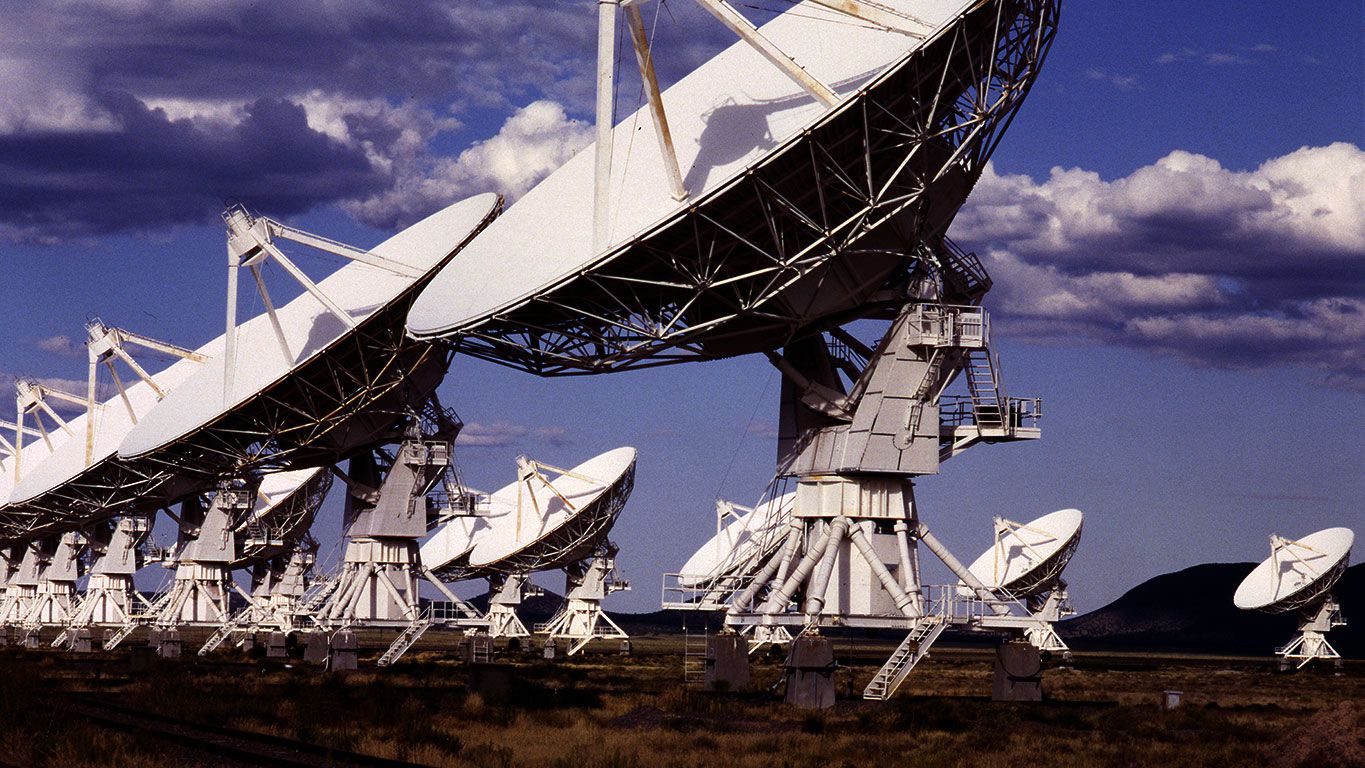 Very Large Array Partners with SETI Institute for SETI Science
Very Large Array Partners with SETI Institute for SETI Scienceand Much More
The planned VLA upgrade and expansion (from the current 28 to a whopping 263 antennas across the US) will not only assist in the SETI search but in radio astronomy research into star formation, galaxies, black holes, and more.
The mission is much more than a hunt for ET, although the National Radio Astronomy Observatory, which has been awarded $23 million to design and develop a prototype antenna for the ngVLA, works with the SETI Institute, an organization dedicated to that search. This is also about pure science.
- Albuquerque Journal: Editorial: VLA’s $2.4B upgrade will keep NM on frontier of space

New Book Examines “Contact” for Veracity
A chapter in a new book of essays about the science in sci-fi movies compares the science and social reactions shown in the movie “Contact” with the reality of the SETI Institute’s history and methods.
If a signal from an intelligent alien civilization is ever detected, it will be a world-changing, paradigm-shifting event. So what are the chances there is life out there that could send such a signal? “There are 400 billion stars out there, just in our galaxy alone. If just one out of a million of those had planets, and just one in a million of those had life, and just one out of a million of those had intelligent life, there would be literally millions of civilizations out there.” Dr. Arroway’s numbers aren’t quite correct and are pessimistic even by the lowest estimates by astronomers. However, even with those numbers, it’s clear that if there wasn’t intelligent life out in the universe, it would be an awful waste of space.
 Tuvok Actor Aids NASA Mission
Tuvok Actor Aids NASA MissionStar Trek: Voyager actor Tim Russ is part of a Unistellar citizen science project to aid NASA in locating asteroid Patroclus for a planned future mission.
The actor told USA Today that contributing to the Lucy mission is important to him because it’ll help us to understand our origins. Indeed, the Lucy probe will complete an astonishing 12-year journey to eight different asteroids. Each one of which NASA refers to as “time capsules” of the solar system from four billion years ago. Which is a very long time. Even for a Vulcan.
- Nerdist: Star Trek: Voyager Actor Tim Russ Helps NASA Spot Asteroid
 Moonstruck? Here Are Answers to Some of Your Questions
Moonstruck? Here Are Answers to Some of Your QuestionsAre you confused about lunar “days” or curious about the current theories of how the Moon formed? How does that “tidal locking” thing work, anyway?
Tidal locking also affects how planets and moons move. This means that the days on Earth and the moon were much shorter when these bodies first formed because both Earth and the moon revolved at a much faster rate than they do currently. A model by researchers at Harvard and the SETI Institute even estimates that the early Earth had a day as short as 2.5 hours at the time of its collision with Theia. However, because of gravitational attraction constantly tugging on the moon’s longest axis to face towards the Earth, the Earth's and moon's days lengthened over time.
- LiveScience: Does the moon rotate?
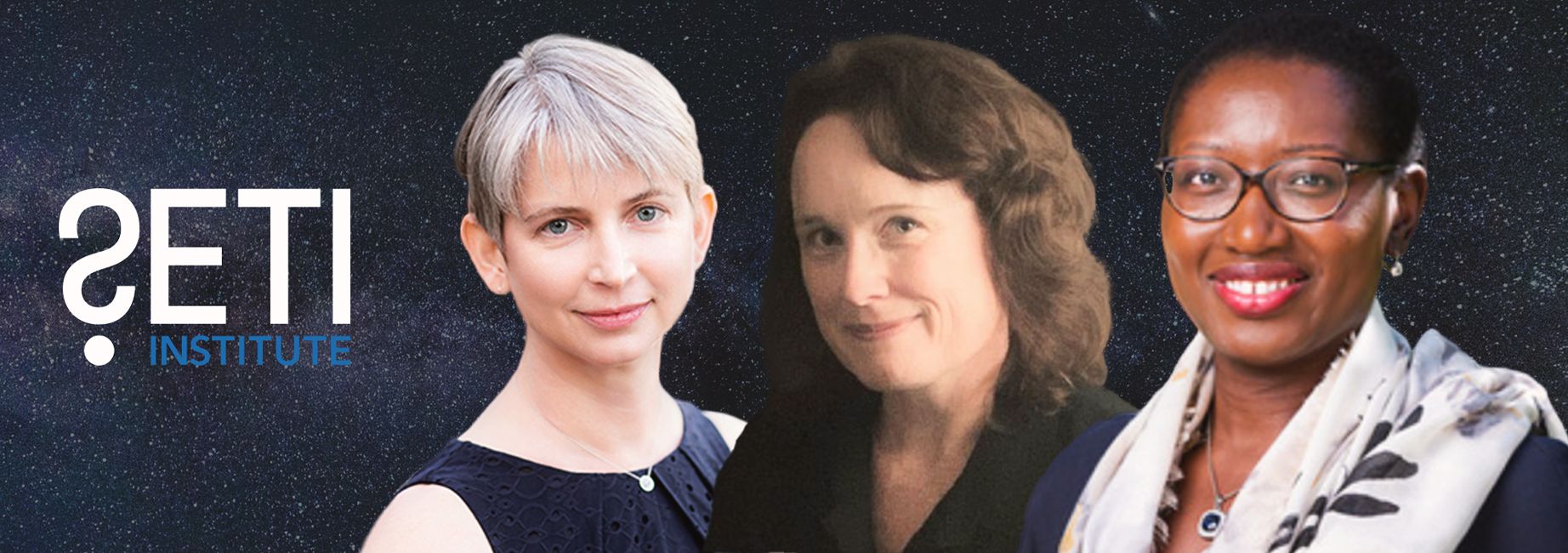 SETI Institute’s Science Advisory Board Adds New Members
SETI Institute’s Science Advisory Board Adds New MembersThe SETI Institute’s Science Advisory Board (SAB) brings external expertise to guide the Institute’s programs on issues of science priorities, partnerships, and funding. The new members are Emily Lackdawalla, Timiebi Aganaba, and Kathryn Denning.
"I am thrilled to welcome our new Science Advisory Board members, who help to broaden the range of expertise the SETI Institute brings to the search for life beyond Earth,” said Lucianne Walkowicz, Chair of the SETI Institute’s SAB. “Given the truly multidisciplinary challenge of the SETI Institute's work, I am particularly happy to see our advisory board branch out to include social scientists, policy experts, and professional communicators, in addition to our members in the natural sciences."
- EurekAlert: SETI Institute adds experts in space governance, science advocacy and the ethics of space exploration to Science Advisory Board
- SETI.org: SETI Institute adds experts in space governance, science advocacy and the ethics of space exploration to Science Advisory Board
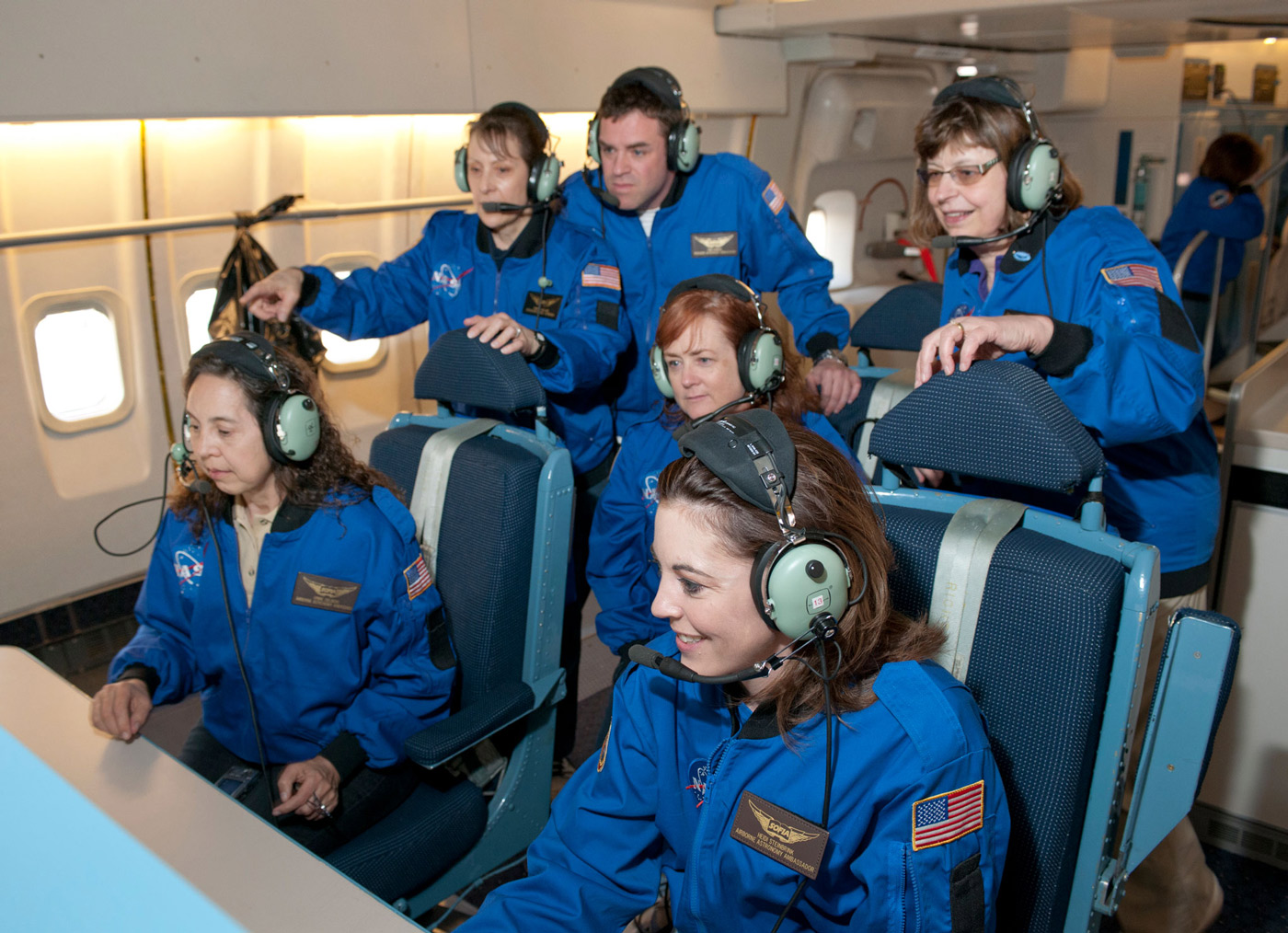 Colorado Teacher Fulfills Dream on SOFIA
Colorado Teacher Fulfills Dream on SOFIAA high school science teacher from Highlands Ranch, Colorado, first applied to be part of the Airborne Astronomy Ambassadors program in 2019, and achieved his ambition with the training and SOFIA flight this year.
MacArthur said a huge passion of his is experiencing what he teaches, and the SOPHIA [sic] program is a big part of that.
“My hope is that showing kids that this stuff is here and obtainable, and your teacher gets to have these experiences, means that you can too,” he said.
- Fintech Zoom: Space – Highlands Ranch High science teacher goes to space with NASA
Join hosts Seth Shostak and Molly Bentley each week as they explore emerging science and technology research.
De-Permafrosting
Above the Arctic Circle, much of the land is underlaid by permafrost. But climate change is causing it to thaw. This is not good news for the planet.
As the carbon rich ground warms, microbes start to feast… releasing greenhouse gases that will warm the Earth even more.
Another possible downside was envisioned by a science-fiction author. Could ancient pathogens–released from the permafrost’s icy grip–cause new pandemics? We investigate what happens when the far north defrosts.
With guests Jacquelyn Gill, Jim Shepard, Scott Salesk.
Animals Being Jerks
They’re cute and cuddly. But they can also be obnoxious.
Science writer Mary Roach has numerous tales about how our animal friends don’t always bow to their human overlords and behave the way we’d want. The resulting encounters, such as when gulls disrupt the Vatican’s Easter mass, make for amusing stories. But others, such as wolves threatening farmers’ livestock, can be tragic.
We hear what happens at the messy crossroads of human and wildlife encounters.
With guest Mary Roach.
More Big Picture Science episodes can be found at http://bigpicturescience.org/episodes.
SETI Institute hosts interview cutting-edge scientists each week on social media. Recent SETI Live episodes include:
How to Put Your Own Spin on JunoCam Images
Dr. Candice Hansen is a senior scientist at the Planetary Science Institute and also responsible for the operations of the JunoCam instrument aboard NASA's Juno spacecraft. JunoCam takes images of Jupiter during the spacecraft's numerous flybys, and those raw images are available for citizen scientists and artists to process. In fact, the Juno team invite everyone to download the images, do your own image processing, and upload your creations for them to enjoy and share. They would love to see results that range from simply cropping an image to highlighting a particular atmospheric feature, as well as adding your own color enhancements, creating collages and adding advanced color reconstruction. JunoCam: https://www.missionjuno.swri.edu/junocam
Utopian Hotline
If we were to send a message into the distant future, what message would we send? Discussing this intriguing question are Rubén Polendo, Founding Artistic Director of the experimental theater company Theater Mitu and Bettina Forget, Director of the SETI Institute’s Artist-in-Residence program. Theater Mitu created a public telephone hotline prompting people to leave messages to the future. These voicemails make up the source material for a vinyl record and a live performance created in partnership with SETI Institute, Arizona State University’s Interplanetary Initiative, and Brooklyn Independent Middle School.
Find out more about the project at https://utopianhotline.com
If you would like to send a message to the future, call the hotline at +1 646 694 8050
A Possible Discovery of Advanced Intelligent Life in Outer Space, With Historical Examples: Either Three Kardashev Type-III Galaxies or Noel Variability in Dusty Galaxies
As we look deeply into the Universe, we see what looks like a wilderness. No compelling detection of life, whether bacterial or more complex, has ever been made. But then, if there is intelligent life in outer space, how could we recognize it over such vast distances? We'll explore the discovery of three Kardashev Type-III galaxies, since they have variability in visible light reminiscent of that of Boyajian’s star (KIC 8462852). Kardashev Type-III galaxies are hypothetical galaxies in which advanced intelligent life forms are using a large fraction of the energy of the galaxy. If this variability is not caused by advanced intelligent life, whatever it is, it can cause the central engines of these galaxies to fade aperiodically by as much as 20%, 30%, and 360% for each of these three galaxies. With Frederick Ringwald, California State University, Fresno and Simon Steel, SETI Institute.
Videos of all past Facebook Live events can be found on our Facebook page, https://www.facebook.com/SETIInstitute/, or on our YouTube channel, https://www.youtube.com/SETIInstitute.





